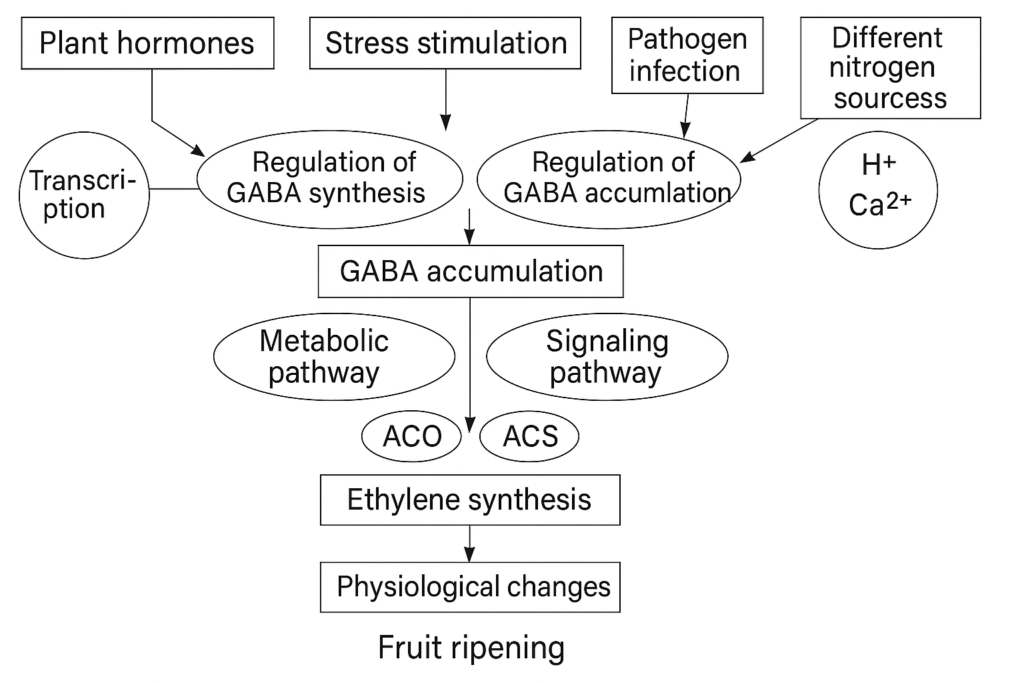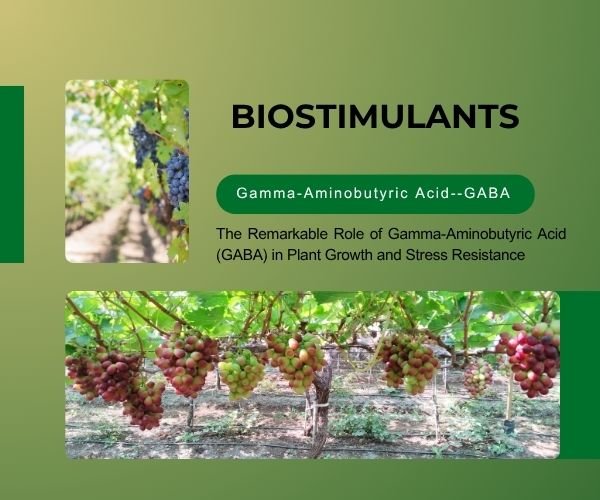Gamma-Aminobutyric Acid (GABA) is a non-protein amino acid that has gained increasing attention in modern agriculture. Recognized as a safe, efficient biostimulant and a powerful cellular signaling inducer, it plays a critical role in regulating plant growth and enhancing stress tolerance. Extensive scientific studies and field applications have demonstrated its unique capacity to improve nutrient uptake, promote robust development, and increase both yield and quality across diverse crops.

1. Significantly Enhances the Uptake of Macro and Micronutrients
Research has proven that GABA synergizes strongly with conventional fertilizers. For example, when a solution of 20-20-20 NPK fertilizer (0.25 g/L) was combined with 0.6 g/L GABA, the mineral nutrient content in plants increased dramatically—calcium, magnesium, and boron levels rose by over 50% compared to fertilizer alone.
Furthermore, combining 20-20-20 (1.0 g/L) with 1.1 g/L GABA resulted in a 172% increase in dry weight. The concentrations of calcium, magnesium, and potassium in the plants were more than 70% higher than with the fertilizer alone. These findings highlight GABA’s significant potential to improve nutrient efficiency and productivity.
2. Stimulates Plant Appetite and Growth
One of the common challenges in fertilization is limited nutrient absorption. Even with optimal fertilizer doses, plants often cannot fully utilize the nutrients applied—similar to a person who can only eat so much regardless of how much food is served.
GABA acts as a natural “appetite enhancer” for plants. In duckweed trials, combining a lower fertilizer dose (20-20-20 at 0.25 g/L) with GABA resulted in biomass significantly exceeding that of the higher fertilizer-only treatment (20-20-20 at 1.0 g/L). In fact, plant dry weight increased by more than 200%, clearly demonstrating GABA’s capacity to unlock greater nutrient absorption and accelerate growth.
GABA also stimulates root vitality, making roots more active and responsive, which further enhances nutrient uptake efficiency.
3. GABA Is Easy to Use and Highly Compatible
One of the key advantages is its excellent compatibility and stability. It is soluble in water, stable in both acidic and alkaline conditions, and blends well with a wide range of fertilizers and agrochemicals. GABA can be applied through various methods, including root drenching, drip irrigation, foliar spraying, and seed treatments. It is suitable for incorporation into:
- Water-soluble fertilizers (macro and micronutrient formulations)
- Foliar nutrient sprays
- Organic fertilizers
- Pesticide formulations
Recommended Application Methods for GABA
To improve stress resistance (salt stress, heat, drought) and boost nutrient uptake, consider the following application rates:
- Seed Treatment / Seed Soaking: Dilute 1:2000–1:2500
- Foliar Spray: 6–10 grams per acre
- Root Drench / Drip Irrigation:
- Vegetable seedlings: 30 g/acre
- Fruiting or swelling stages: 40–60 g/acre
Conclusion
GABA represents a promising and scientifically validated tool for sustainable agriculture. By enhancing nutrient efficiency, stimulating growth, and improving plant resilience, it supports higher yields and better crop quality while reducing dependence on excessive fertilizer inputs. For growers seeking to unlock the full potential of their crops, integrating GABA into fertilization programs offers a practical and effective solution.


